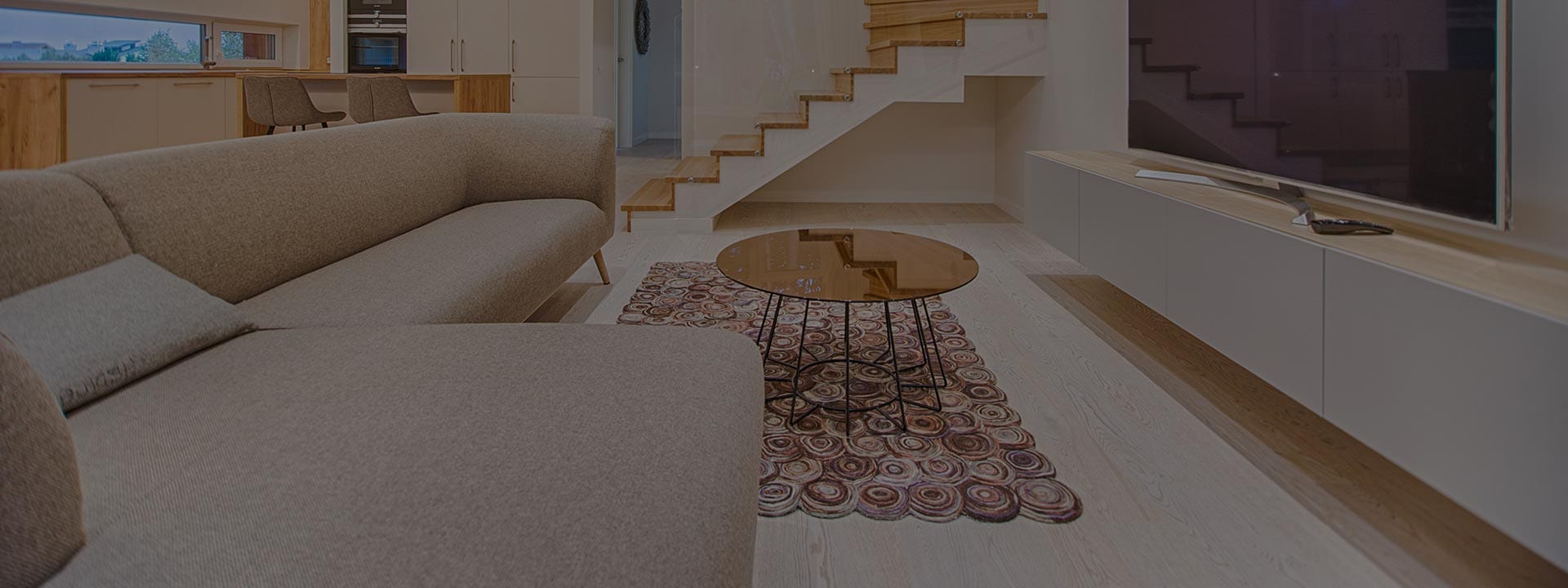
Owner Education
General information regarding all hardwood floors
Real Hardwood floors, unlike plastic or vinyl substitutes are a work of nature and therefore vary in character from piece to piece. This characteristic ensures the unique nature of every floor, its enduring charm and warmth. This characteristic also means owners and installers should expect variations they may not wish to see in a particular area.
It is vitally important that owners;
- Understand grade characteristics and choose the right ‘look’ and or ‘grade’ of product
- Communicate properly to the installer exactly what you want / don’t want to see in the finished floor
- Installers must do a thorough inspection of each piece before installation to ensure it complies with the owner’s expectations.
• Installers must take responsibility for final control of the flooring appearance;
* placing inconsistent pieces in un-seen areas such as closets is expected of the installer.
• Further, it is the responsibility of the installer to ensure the job site meets necessary conditions outlined in “Job site preparation”. Manufacturers of wood flooring cannot control this aspect of installation; therefore neither do they accept warranty liability if failure results from improper site prep or evaluation.
• Industry standards allow 5% tolerance off grade. Hence 5% extra square footage should be ordered as allowance for possible cutting waste, grade allowance, or manufacturing deficiency. Unless a particular aspect of the product exceeds 5%of the total, it’s considered within grade and not eligible for claim.
Owner Expectations
“Squeaking floors”
Floor assembly systems consisting of wooden trusses, joists, sub-flooring and finished wood flooring are susceptible to squeaks emanating from movement of the various components in relation to and in contact with each other.
Specifically, the sound often comes from movement between:
• Sub-floor to joist contact where no adhesive is used.
• Separate boards in the sub-floor moving in contact with each other
• ‘Bounce’ in the whole system due to weakness of joists or trusses
• Flooring to sub-floor movement where they are in direct contact
• Mechanical fasteners connecting various components of sub-floor to joist, or flooring to sub-floor
• Movement between flooring boards as result of shrinkage during dry seasons
• Flexing of weak sub-floor such as 5/8” OSB, particularly over areas exceeding 16” between joists.
• T&G machining which is too loose ( manufacturing responsibility )
• Staples which have been over driven thus breaking the tongue off and allowing movement of one floor board against surrounding ones.
• Insufficient or inconsistent stapling patterns which allow excess movement.
• Total lack of staples where the gun ran out and was not noticed by the installer.
Proper sub-floor construction or preparation can limit squeaking problems, however there is no guarantee that the floor will not squeak at some time as result of conditions beyond the control of manufacturers or installers of the various components including finished wood flooring. Varying conditions of humidity throughout seasonal changes in our climates cause these wooden components to swell then shrink repeatedly. The result is that over time this can result in movement and squeaking. There is no warranty offered against the condition unless it is proven to be manufacturing deficiency.
“Shrinkage” or “Gapping” Between Floor Boards
Conditions of the environment surrounding and affecting your floor will result in varying degrees of ‘shrinkage’ during dryer seasons, or in arid climates, and expansion or swelling during humid seasons or in generally humid climates. The result may be gaps which open between boards while dry, and close again as humidity increases. This condition is limited by proper drying and conditioning of solid wood floors done by the manufacturer, however since manufacturers do not control the conditions in your home, neither do they warrant that such conditions will not result in unacceptable conditions in your floor.
“Cupping” or “Crowning” of Floor Boards (Normally Solid wood)
Defined loosely as “Concave” (Cupped) or “Convex” (Crowned) appearance Proper Installation requires confirming the moisture content of sub-floor and humidity of the installation site prior to installation to ensure the site is ready. Proper installation also requires checking the moisture content of the flooring before installation to confirm it is within the correct range 7% +/- 1% depending on specie. Installers are also charged with responsibility to acclimate the flooring to the job site if indeed that is feasible.
Note – some sites are too damp to acclimate to and should not have wood flooring!
Having acclimated properly, at least your floor starts with the best efforts man can contribute. This is by no means a guarantee that the floor will not react adversely to its environment after installation. This preparatory work does however increase the probability of success in achieving the desired result of a beautiful floor.
Color Change and Fading of Hardwoods
All Hardwoods undergo color change as result of exposure to sunlight, and to lesser extent incandescent home lighting. Some become darker, some lighter, while
still others turn amber or more ‘yellowed’ in hue. In direct sunlight, the changes occur quite rapidly, particularly during summer months while sun energy is at its peak in northern latitudes.



